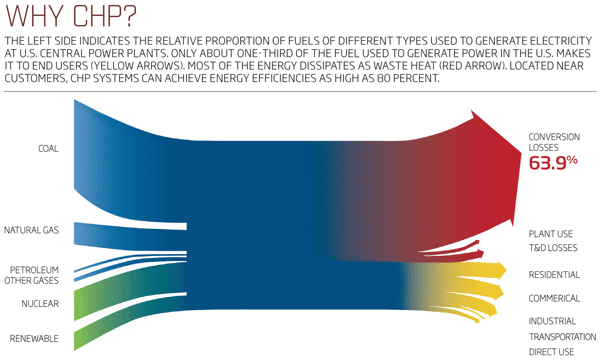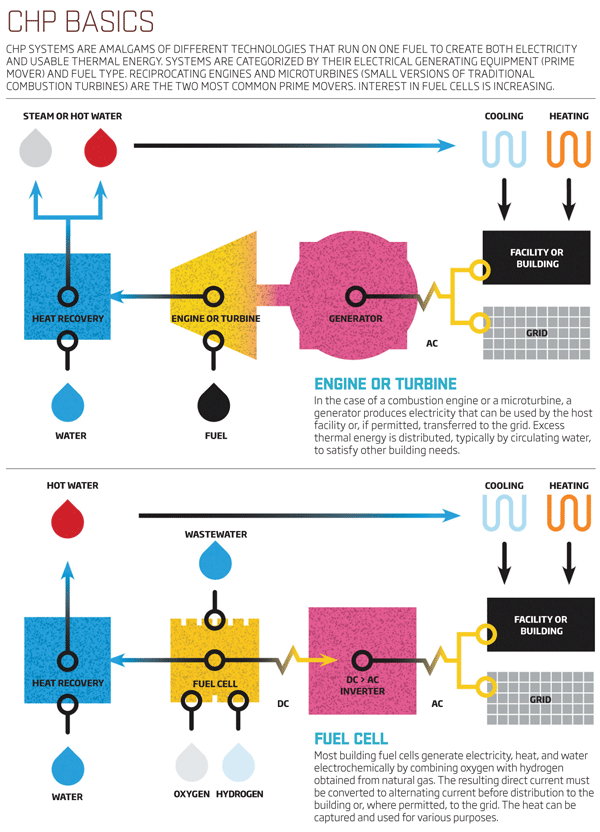The Little Engines That Can
The Many Faces of CHP
CHP is not a particular kind of technology. Instead, the term refers to any system that generates both usable electrical and thermal energy from one fuel source. Because it combines power generation with a variety of thermally activated technologies, CHP is considered an integrated energy system (IES). And because production must occur near the user rather than at a more remote plant—thermal energy dissipates very quickly—it is also categorized as distributed energy (DE) or decentralized generation (DG).
A CHP system is typically classified by its prime mover—the technology that generates the power—and its fuel source. According to the Combined Heat and Power Installation Database maintained by Energy and Environmental Analysis/ICF International, possible prime movers include boiler-steam turbines, combustion turbines, microturbines, reciprocating engines, combined-cycle generation, fuel cells, and waste heat recovery systems. And potential fuels run the gamut, from fossil fuels and by-products of manufacturing processes to renewable resources.
 |
|
Source: DOE Annual Energy Review, 2007 |
The relationship between power generation and thermal generation can vary among CHP systems. In natural gas-fired microturbines and reciprocating engines—two of the most common types of systems for individual buildings—the combustion of fossil fuel leads to the generation of electricity plus excess or waste heat that can be used for another purpose. In contrast, a waste heat recovery system—which is more common to certain industrial applications—starts with the waste heat from a manufacturing process and uses it to produce steam that drives a turbine to generate electricity. In the case of fuel cell systems, combining hydrogen and oxygen molecules leads to the simultaneous generation of electricity and heat.
Today's CHP systems use recovered waste heat for a variety of purposes, including space heating and cooling, hot water heating, dehumidification, and refrigeration. Industrial sites may also take advantage of the thermal energy for manufacturing processes in addition to the aforementioned generation of electricity. Additional terminology has been developed to emphasize different applications. For instance, the acronym CCHP (combined cooling, heating, and power) or the term trigeneration are used when referring to systems that offer cooling in addition to heating and electricity.
 |









